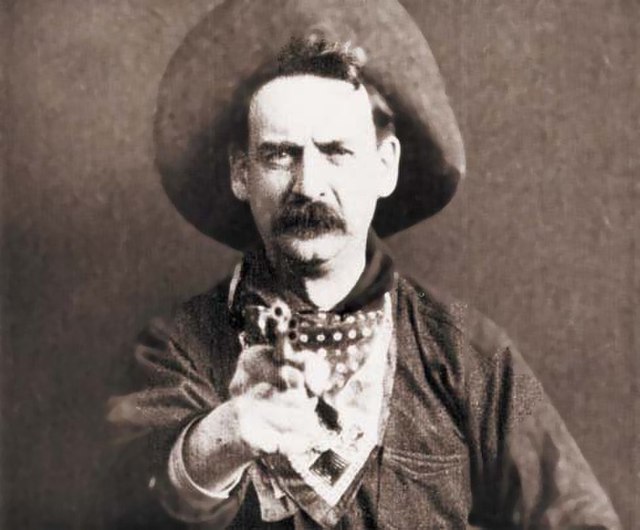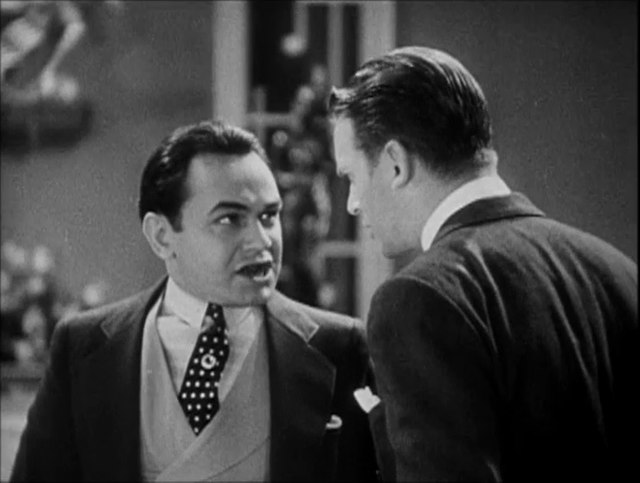The era of American film production from the early sound era to the enforcement of the Hays Code in 1934 is denoted as Pre-Code Hollywood. The era contained violence and crime in pictures which would not be seen again until decades later. Although the Hays office had specifically recommended removing profanity, the drug trade, and prostitution from pictures, it had never officially recommended against depictions of violence in any form in the 1920s. State censor boards, however, created their own guidelines, and New York in particular developed a list of violent material which had to be removed for a picture to be shown in the state. Two main types of crime films were released during the period: the gangster picture and the prison film.
Paul Muni (as Tony Camonte) taunting and laughing at police officers he has just shot at in the trailer for Scarface (1932). The Hays office wanted this ending of the gangster film replaced with one where Muni's character is tried and executed.
A famous shot, of "Bronco Billy Anderson", from the 1903 film The Great Train Robbery, the first "Western" ever filmed. Scenes where criminals aimed guns at the camera were considered inappropriate by the New York state censor board in the 1920s and usually removed.
Rico (Edward G. Robinson) confronting Joe (Douglas Fairbanks Jr.) when Joe wants to leave the mob in Little Caesar (1931). The public's fascination with gangster films, in the early 1930s, was bolstered by, the constant newsreel appearances of, real-life criminals, like Al Capone and John Dillinger, upon whom characters like Robinson's were often based.
James Cagney smashes a grapefruit into Mae Clarke's face in The Public Enemy (1931).
The Motion Picture Production Code was a set of industry guidelines for the self-censorship of content that was applied to most motion pictures released by major studios in the United States from 1934 to 1968. It is also popularly known as the Hays Code, after Will H. Hays, president of the Motion Picture Producers and Distributors of America (MPPDA) from 1922 to 1945. Under Hays's leadership, the MPPDA, later the Motion Picture Association of America (MPAA) and the Motion Picture Association (MPA), adopted the Production Code in 1930 and began rigidly enforcing it in 1934. The Production Code spelled out acceptable and unacceptable content for motion pictures produced for a public audience in the United States.
Thou Shalt Not, a 1940 photo by Whitey Schafer deliberately subverting some of the Code's strictures
A famous shot from the 1903 film The Great Train Robbery. Scenes where criminals aimed guns at the camera were considered inappropriate by the New York state censor board in the 1920s, and usually removed.
Actor Boris Karloff as Doctor Frankenstein's creation in the 1931 film Frankenstein. By the time the film's sequel, Bride of Frankenstein, arrived in 1935, enforcement of the Code was in full effect, and the doctor's overt God complex was forbidden. In the first picture, however, when the creature was born, his mad scientist creator was free to proclaim "Now I know what it feels like to be God!"
Some directors found ways to get around the Code guidelines; an example of this was in Alfred Hitchcock's 1946 film Notorious, where he worked around the rule of three-second-kissing by having the two actors break off every three seconds. The whole sequence lasts two and a half minutes.







